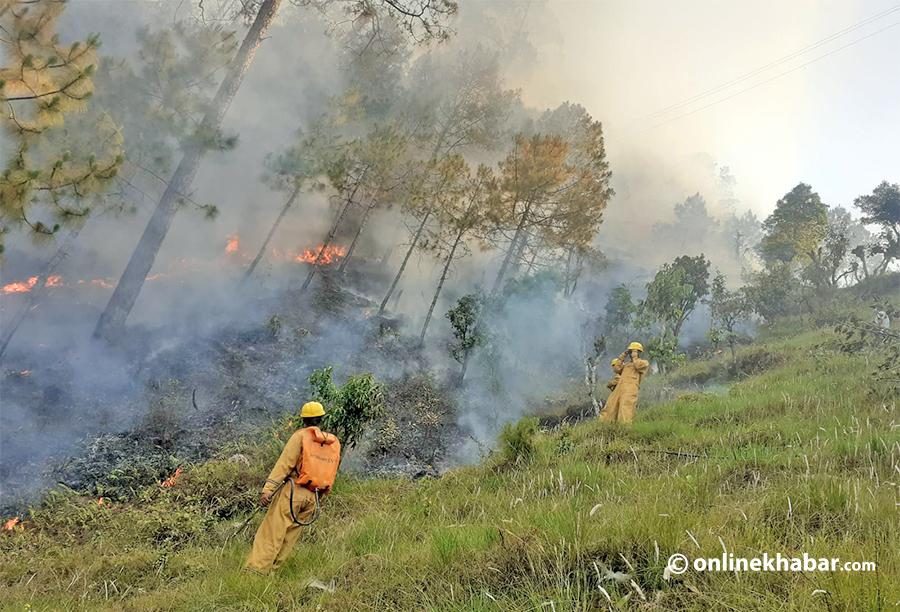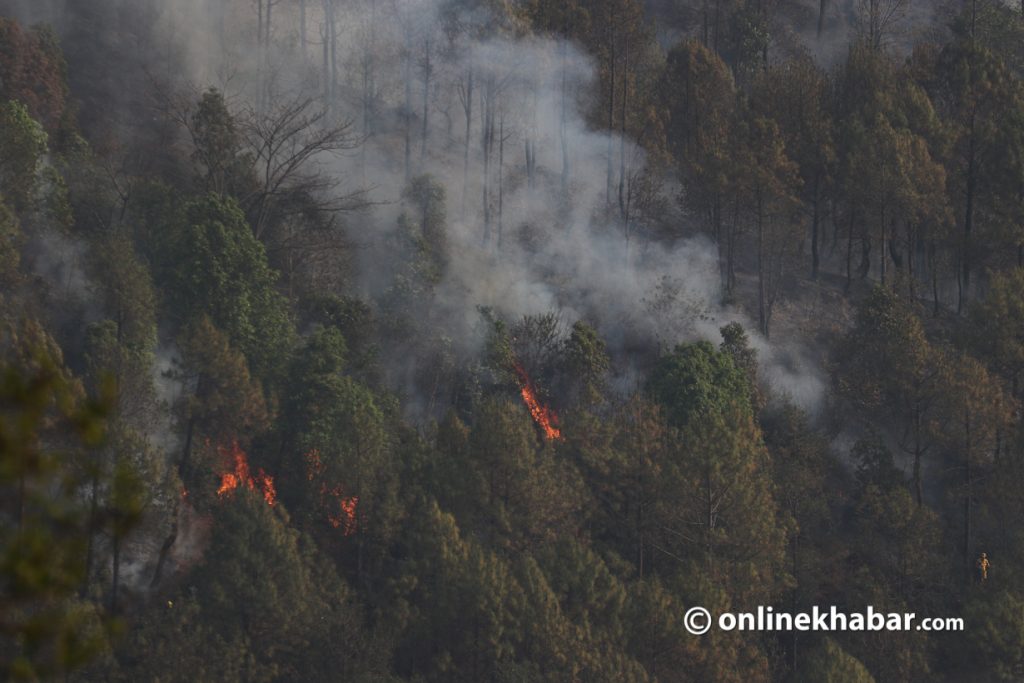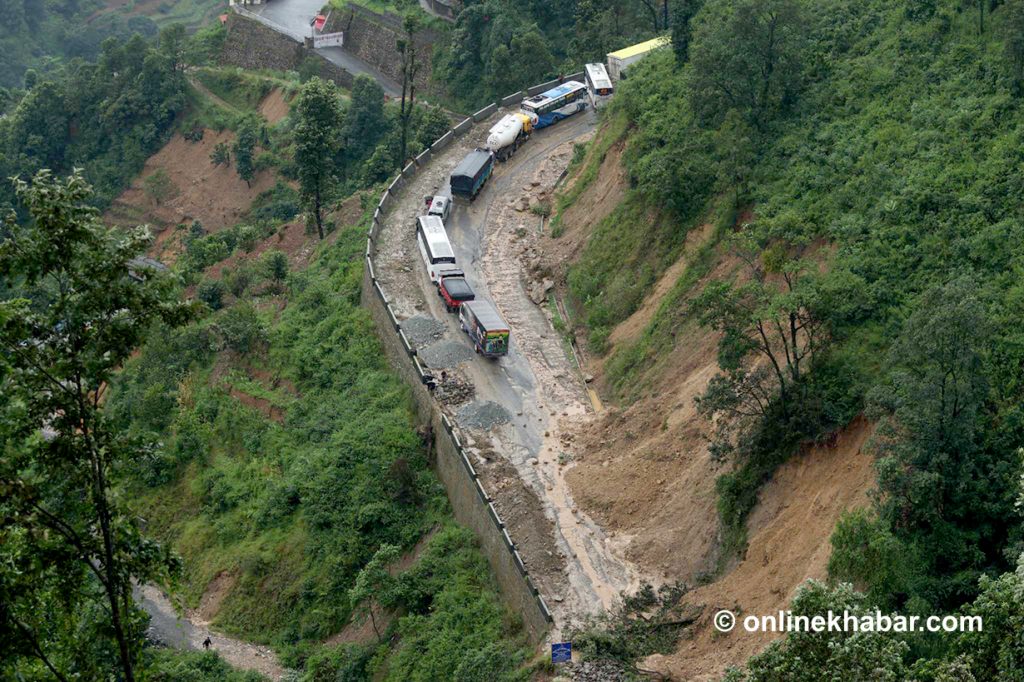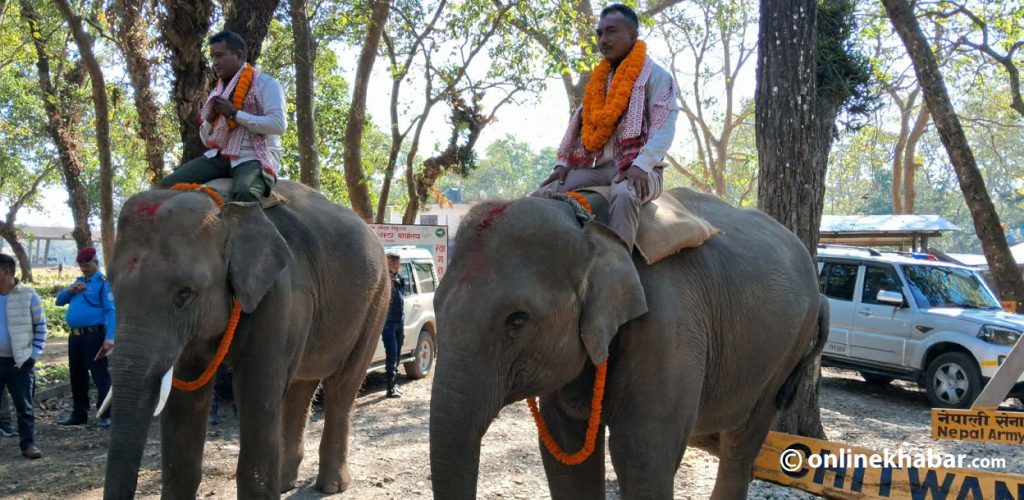
Despite numerous awareness programmes such as the Week-long forest fire awareness campaign organised by the Department of Forest and Soil Conservation, recently, and the efforts of academicians advocating for fire management, Nepal continues to face significant forest fires every year.
These fires not only result in loss of life and damage to households but also disrupt forest ecosystems, impacting regeneration and wildlife.
According to the National Disaster Risk Reduction and Management Authority (NDRRMA), 139 wildfire incidents were recorded in the country from March 14 to 17 alone. Many of these incidents resulted from controlled fires spiralling out of control.
So far, wildfires have been reported in 22 districts across the country, with Eastern Nepal experiencing relatively higher impacts.
The cause
One might argue that the problem lies not in the lack of awareness programmes, human resources, equipment, or early warning systems, but rather in the understanding of why people continue to ignite fires in forests despite the risks involved. Some believe that forest fires have increased due to decreased interaction of people with the forest, ultimately increasing the fuel for fires inside the forest, others argue that climate change may be the reason.
Events often have multiple causes, with some being more responsible than others. We are all aware of who ignites the forest fires, and we are unable to stop them despite our efforts. Then we need to understand why people ignite forests, risking everything.
In Nepal, with over 22 thousand community forests, the local communities are directly involved in forest management, relying on forests for fodder, fuelwood, and other resources. Farmers and herders ignite fire in the forest primarily to encourage the lushness of grasses.
However, as the dry seasons progress without rainfall, the hidden burning done by some people spreads over a large area of forest, harming both humans and the forest ecosystem.
The effect

According to the data from the Moderate Resolution Imaging Spectroradiometer (MODIS) on average, about 2.65 million hectares per year are affected by forest fires, with approximately 2896 incidents recorded annually. Notably, around 25 per cent of these incidents occur in protected areas, with the Chure region being particularly vulnerable, followed by Terai and Siwalik.
The forestry department has been emphasising the prevention of forest fires rather than controlled burning. Each community forest is equipped with firelines to control fires, but more collaboration is needed between the department and local communities. They should discuss which blocks require controlled burning to promote sprouting and the growth of grasses.
Completely restricting forest fires is not a feasible solution and controlled burns seem more relevant than fire suppression efforts.
The measures
Controlled burns need to be scheduled at times when they do not pose a threat to the public and should be conducted under specific forest and weather conditions. Materials burned include dead grass, fallen branches, and thick undergrowth.
A detailed plan or prescription can be developed before a burn, outlining the fire’s size, what it will burn, objectives, weather conditions, and fire management strategies. This plan will include measures for smoke management, public notification, required protective equipment, and available firefighting resources.
Prescribed fires serve as a protective buffer for communities and create open spaces that help firefighters control wildfires more effectively when they do occur. Wildfires in areas where fuels have been reduced by prescribed fires tend to cause less damage and are more manageable.
FAO, 2024 emphasises the importance of an integrated approach to fire management, known as Integrated fire Management (IFM), which consists of five key elements, also referred to as the five Rs: review (monitoring and analysis), risk reduction (prevention), readiness (preparedness), response (suppression), and recovery. Forest managers play crucial roles in all these elements.
A research review paper by Marcos Francos and Xavier Úbeda in 2021 based on the scientific articles published in the last two decades in the Scopus Database indicates that prescribed fires, despite short-term negative effects on soil, water, and vegetation, offer temporary impacts, with benefits outweighing drawbacks, making prescribed burning a valuable management tool for incorporation into land management and regional planning, necessitating collaboration among researchers, managers, stakeholders, and landowners to optimise implementation.
It is time for a collaborative approach to forest fire management, one that balances the need for fire as a natural tool with the necessity of protecting communities and ecosystems. Allowing controlled burns in designated blocks, under strict supervision and guidance from the forestry department, can help mitigate the risk of wildfires near villages while promoting local vegetation growth.























